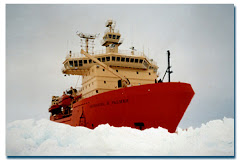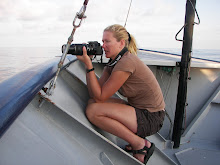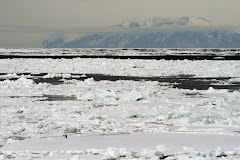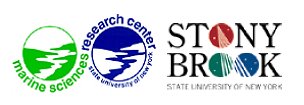 Well, my research cruise in the eastern tropical Pacific (ETP) has ended. The cruise was an incredible experience, both personally and professionally, and will not be something I soon forget. In a month's time, I will be shipping out to Antarctica for a 6-week research cruise. In the meantime, I will begin processing my samples from my grazing experiments conducted in the ETP. It's good to be back on solid ground (for now)! Happy holidays!
Well, my research cruise in the eastern tropical Pacific (ETP) has ended. The cruise was an incredible experience, both personally and professionally, and will not be something I soon forget. In a month's time, I will be shipping out to Antarctica for a 6-week research cruise. In the meantime, I will begin processing my samples from my grazing experiments conducted in the ETP. It's good to be back on solid ground (for now)! Happy holidays!Friday, November 30, 2007
Home from the tropics
 Well, my research cruise in the eastern tropical Pacific (ETP) has ended. The cruise was an incredible experience, both personally and professionally, and will not be something I soon forget. In a month's time, I will be shipping out to Antarctica for a 6-week research cruise. In the meantime, I will begin processing my samples from my grazing experiments conducted in the ETP. It's good to be back on solid ground (for now)! Happy holidays!
Well, my research cruise in the eastern tropical Pacific (ETP) has ended. The cruise was an incredible experience, both personally and professionally, and will not be something I soon forget. In a month's time, I will be shipping out to Antarctica for a 6-week research cruise. In the meantime, I will begin processing my samples from my grazing experiments conducted in the ETP. It's good to be back on solid ground (for now)! Happy holidays!Monday, November 5, 2007
Pteropods

At our first long station, I began a series of experiments on pteropods. These beautiful mollusks are entirely planktonic (spending their entire lives in the water column) and use modified ‘feet’ for wings to propel them through the water. They feed by creating large mucus webs which trap particles and small organisms. Despite their beauty, very little is known of these animals and I began experiments to help determine what they are feeding on and any impact their feeding may have on different size-fractions of the planktonic community. The first set of experiments involved Cavolinia tridentata (pictured above), a pteropod with prominent "wings" and a conspicuous dark spot marking their visceral mass.
Sunday, November 4, 2007
Hello from Station #5 located at 10° 41’41N and 96° 56’6W. The seas calmed down quite a bit for us at our first long station, but are now beginning to pick up again canceling our research plans for tonight. The computers here onboard the ship have been a bit grouchy and so I have focused all my effort on the ETP blog (www.etpcruise.blogspot.com), which details the purpose of this trip and our adventures at sea. Fortunately though it seems that we may have fixed what was wrong, so I can now post some long-awaited pictures onto this site. This research cruise has been an excellent experience for me, exposing me to the technical side of oceanographic research (the methods and equipment involved) and the exciting creatures these tools successfully collect. It has also introduced me to life at sea, which can be very exciting and rewarding (although we all count the days to returning home). On the research vessel, I work for Dr. Karen Wishner from the University of Rhode Island on her MOCNESS team. The MOCNESS (Multiple Opening and Closing Net Environmental Sampling System) consists of a series of 8 nets which can be opened and closed at specific depths in the water column via computer control from onboard the ship. This enables scientists to categorize and enumerate zooplankton populations at specific intervals. In Dr. Wishner’s case, the MOCNESS enables her to identify zooplankton populations at different depths within the oxygen minimum zone, which exists over several hundred meters from beneath the mixed surface layer to approximately 1500 meters in depth. It’s great working with the MOCNESS as I had previously only heard about it through introductory biological oceanography classes.
Tuesday, October 23, 2007
Hello from a few hundred miles off the coast of Mexico! We finally arrived at our first sampling station today. This will be a short (test) station before moving onto our first of two long stations of the cruise. We successfully deployed our CTD and rosette of Nisken bottles to collect the first water samples this afternoon. Today marks a week that we have been at sea. There is little sun here in the tropics as we have been in the shadow of tropical storm turned hurricane turned tropical depression Kiko, but the seas are much calmer than they were a few days ago. Dolphins have been sighted everyday during our transit here, and I saw my second manta ray leap clear out of the water a couple of days ago. This remains a wonderful experience, but I am all the more eager as the real science begins and I get to work both as crew assisting with the MOCNESS (Multiple Opening and Closing Net Environmental Sampling System, a large plankton net which will collect zooplankton at various depths), and as a Ph D. student conducting my own experiments here at sea. Wish me luck!
Hello from a few hundred miles off the coast of Mexico! We finally arrived at our first sampling station today. This will be a short (test) station before moving onto our first of two long stations of the cruise. We successfully deployed our CTD and rosette of Nisken bottles to collect the first water samples this afternoon. Today marks a week that we have been at sea. There is little sun here in the tropics as we have been in the shadow of tropical storm turned hurricane turned tropical depression Kiko, but the seas are much calmer than they were a few days ago. Dolphins have been sighted everyday during our transit here, and I saw my second manta ray leap clear out of the water a couple of days ago. This remains a wonderful experience, but I am all the more eager as the real science begins and I get to work both as crew assisting with the MOCNESS (Multiple Opening and Closing Net Environmental Sampling System, a large plankton net which will collect zooplankton at various depths), and as a Ph D. student conducting my own experiments here at sea. Wish me luck!
Saturday, October 20, 2007
Panama and beyond
Greetings from a few hundred miles off the coast of Costa Rica! I am currently at sea in the Pacific Ocean for a month-long research cruise studying zooplankton with researchers from the University of Rhode Island and University of South Florida. The ship – a 204 ft research vessel known as the R/V Seward Johnson – left port from Panama on Thursday morning. We are steaming towards our first sampling station, which is still a day or two away. The seas are rough (10-12 ft swells yesterday, a bit calmer today) and it is raining continuously, which is not unusual as it is the rainy season here in the tropics. Many of the scientists, including myself, have been a bit green at one point or another, but I am feeling great today. I have seen tuna jumping from the water, dolphins leaping into the air, and a manta ray break the surface. Brown boobies and diving storm petrels are frequently spotted alongside our ship.
I flew into Panama City, Panama on Monday morning and had an opportunity to check out the canal and take a boat ride through the rainforests of Gamboa. What a great trip that was! We saw crocodile, caiman, a two-toed sloth, iguana, and monkeys! The Panama Canal was a great stop as well. The people of Panama are very kind and speak little to no English, so I had a chance to practice my weak Spanish skills. We had lunch and dinner in Panama City – all very good food, and cheap beer! Of course now, we are on a ‘dry’ ship, but the crew here keeps us well fed everyday. There is a small gym onboard, which includes weights, a bike and a treadmill. The treadmill presents a whole new set of challenges while at sea as you try to balance as the ship rocks back and forth in the rough seas. Be sure to check out the link to the cruise website @ www.etpcruise.blogspot.com.
I flew into Panama City, Panama on Monday morning and had an opportunity to check out the canal and take a boat ride through the rainforests of Gamboa. What a great trip that was! We saw crocodile, caiman, a two-toed sloth, iguana, and monkeys! The Panama Canal was a great stop as well. The people of Panama are very kind and speak little to no English, so I had a chance to practice my weak Spanish skills. We had lunch and dinner in Panama City – all very good food, and cheap beer! Of course now, we are on a ‘dry’ ship, but the crew here keeps us well fed everyday. There is a small gym onboard, which includes weights, a bike and a treadmill. The treadmill presents a whole new set of challenges while at sea as you try to balance as the ship rocks back and forth in the rough seas. Be sure to check out the link to the cruise website @ www.etpcruise.blogspot.com.
Friday, October 19, 2007
Thursday, October 11, 2007
ETP Bound
In a few days, I will be traveling to Panama City to meet up with fellow marine scientists and our research vessel, the R/V Seward Johnson, on which I will be spending the next four weeks at sea. This research cruise in the Eastern Tropical Pacific will examine zooplankton ecology and feeding dynamics. For more information on this cruise and to follow along in our adventures at sea, follow the link on the bottom-right corner of this page ("Eastern Tropical Pacific"). Don't forget your dramamine!!!
Saturday, October 6, 2007
The web page is born!
At long last, a website documenting my adventures as a marine scientist is born!
Subscribe to:
Posts (Atom)





.jpg)




